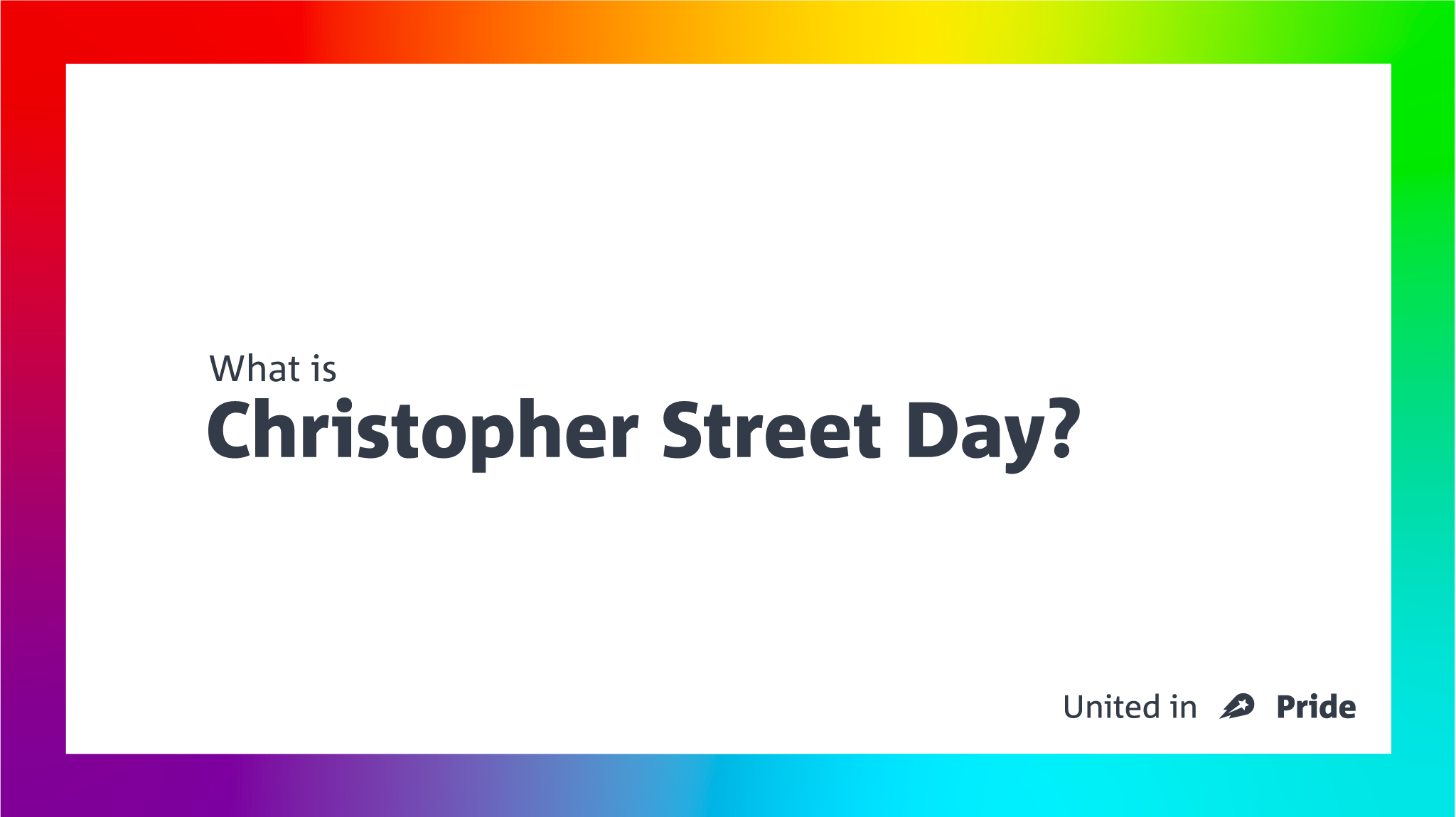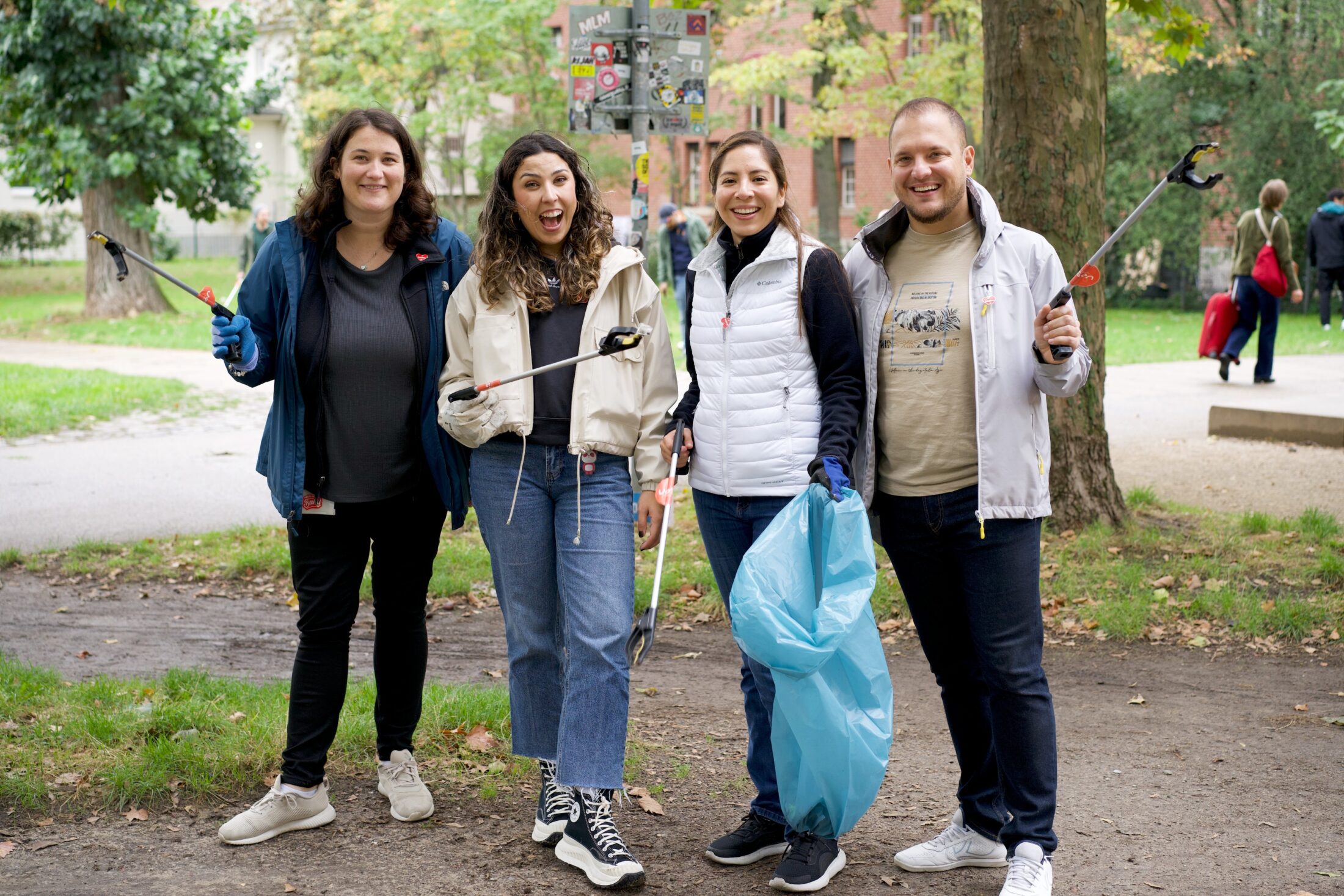Culture & Careers
- July 18, 2022Pride Explained: An in-depth look at the history of Christopher Street Day
While Pride Month is over, Berlin’s calendar still has one important date you shouldn’t miss if you call the city your home: Christopher Street Day (CSD). For decades, this annual celebration in late July has been a dynamic and emotive expression of LGBTQIA+ people’s right to celebrate their identities and demand more societal progress.
Creating a welcoming and inclusive environment is a vital part of Delivery Hero’s company culture, as such celebrating events like CSD are a cornerstone in making sure all Heroes feel they can be their authentic selves at work.
Rooted in a historical moment and still as symbolic to today’s times, read on to learn more about what CSD is and what it represents.
Why is it called Christopher Street Day?
Newcomers to Berlin and Germany might encounter some confusion when it comes to the name, as they may be familiar with international celebrations under the name of Pride. In Germany and several other European countries, including Switzerland and Austria, the annual celebration for LGBTQIA+ Pride has taken the name of Christopher Street Day since its earliest days.
Christopher Street is not a person, but rather the street in New York City where the Stonewall Riots occurred and the fight for LGBTQIA+ rights picked up pace internationally. On June 28, 1969, the first big uprising of LGBTQIA+ people against police raids occurred at the Stonewall Inn on Christopher Street in New York City’s Greenwich Village. The police raids primarily affected trans people, especially non-white trans women, due to the laws at the time against “cross-dressing”, even in gay bars.
The following year marches to mark the first anniversary of the riots were held in Chicago, San Francisco, New York, and Los Angeles. Today, the riots are internationally recognized as the spark of the modern LGBTQIA+ rights movement.
What does Christopher Street Day in Berlin look like?
The first German CSD took place in West Berlin on June 30, 1979, and consisted of 450 protestors taking to the street under the motto “Gay Pride”. In a marked difference from previous LGBTQIA+ events, no hostilities or violence against the participants were recorded.
In the four decades since Berlin’s first CSD, the underlying current of demanding the same rights and treatment as cis, heterosexual people remained. As LGBTQIA+ people were granted more rights and safety in the city, the parade transformed more into a celebration of Berlin’s queer life and its generally inclusive party atmosphere.
From the 450 protestors who took Berlin’s streets in 1979, the day’s popularity has grown tremendously – becoming one of the most important dates on the city’s calendar. The last CSD parade in 2019 attracted tens of thousands of attendees. From a defiant act by an underrepresented group of protesters to an event attended by a large majority of the city, CSD is a reminder of the significant cultural shift in recent decades.
What will Christopher Street Day look like in 2022?
This year will mark the first time in three years where CSD’s full-fledged form – a street protest with dozens of floats, a full stage program, and the beloved crowd of LGBTQIA+ and ally visitors – will return. The program will start at Leipziger Straße in Mitte, and make its way through Potsdamer Platz, Nollendorfplatz, past the famous Siegessäule, before ending up in a typical celebration at the Brandenburger Tor. This year, 1 million visitors are expected to attend. As a result of the global pandemic, CSD was unable to take place in 2020 and took the form of a minimal protest in 2021.
However, CSD is not just the final protest parade but rather a month-long agenda – spanning from June 28 to July 24 this year and organized by the Berliner Christopher Street Day e.V. association. The overall aim of the events is to make all identities within the LGBTQIA+ community visible and to provide support to them. Under this aim, the association has stated several main priorities for this year’s Pride Month including recognizing the connection between the LGBTQIA+ community and religion, enhancing FLINTA and lesbian visibility, and supporting trans people of color.
How is Delivery Hero celebrating Pride in 2022?
At Delivery Hero, we aim to foster a workplace that is known inside and out for its diverse, inclusive, and equitable culture – where Heroes of any and all identities feel they can be themselves and have equal opportunities to start, grow and progress in their career. For the LGBTQIA+ community, this also means celebrating the uniqueness of each person and embracing intersectionality as a vital way to create a happy, healthy world. We want our Heroes to know that there is no wrong way to be you.
Throughout the months of June and July, we have been spreading awareness on various topics, including the meaning of the LGBTQIA+ acronym, how to adopt inclusive language, how Heroes can be LGBTQIA+ allies, and what intersectionality means. We have also been encouraging our employees to join our LGBTQIA+ employee resource group, the Proud Heroes – whether as part of the community or as an ally. We rounded off the two months with several workplace events that were organized for our Heroes to mingle and learn more about what they can do to support the LGBTQIA+ community.
This Saturday’s Berlin CSD also marks the return of our beloved Delivery Hero truck – powered by our LGBTQIA+ employee resource group, the Proud Heroes. At Delivery Hero we are Heroes because we care, and being able to provide a safe and inclusive environment for all our Heroes will continue beyond Pride Month and CSD.





Share